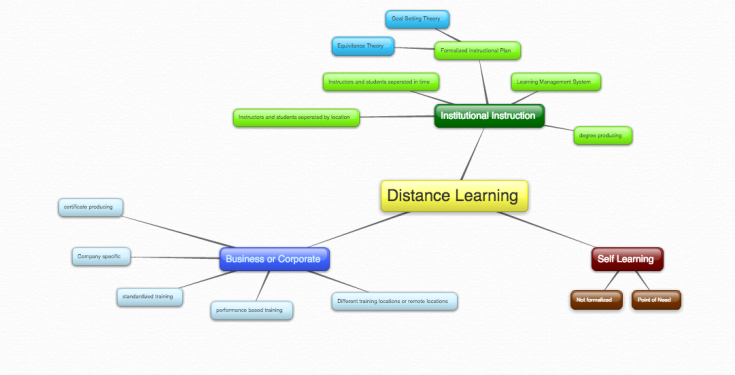Before one transforms a synchronous traditional classroom into a blend learning environments there are several areas of concern, which should be addressed prior to the endeavor. The act of transforming a traditional classroom into a blended learning environment could require substantial investment of resources. Therefore the first required step of transforming the course is to obtain buy-in from your stakeholder or administration. “Blended courses can be employed when the instructor feels that the online activities are more productive learning experience for students,”( Simonson, Smaldino, Albright, Zvacek, 2012). When Dr. George Piskurich was asked about how to determine if your course topic is appropriate for distance learning he states,” You have some ideas of what you need, and how you need it and what needs be done based on talking through the rest of analysis with your subject matter experts, with your stakeholders and varies and sundry people that you will be working with, and you take all of that information to roughly about the job task analysis level, and you put it all together and you look at it for a while… A good instructional designer looks for the blended approaches, and that makes the delivery process, ah, delivery analysis a little bit more difficult but at the same time it makes the actual class a lot more effective,” (Laureate Education, n.d) If your funding source agrees on your methodology and your assessment of more productive learning experience can be achieved then you can proceed.
The next step is to examine your objectives and determine if your objectives can be meet using a blended approach or will your objects require modification. “Some topics may not adapt well to delivery by computer,”(Simonson, et al, 2012). One needs to determine which portion of the objectives are viable distance learning objectives and which objectives must remain synchronous traditional classroom objectives.
Once the distance learning objectives have been identified then the methods of presenting the information must be designed. “Well-designed Internet-based course may be labor-intensive to develop, requiring time and personnel resources not available to many instructors,”(Simonson, et al, 2012). Areas of concern in this aspect is what technology is available, how much time will be required to develop the new courseware, how much will the new course cost, how will you distribute the new courseware, and how will you perform the assessment of if the material presented was effective and retained or not.
So far everything is in the best-case scenario, so the final consideration is how to handle situations when the best case fails to happen. “The support infrastructure, providing training and technical assistance to both students and instructors, is often minimal or nonexistent…Bandwidth limitations make it difficult to present advanced technologies, such as streamed video, multimedia, and memory-intensive graphics, over the Web,”(Simonson, et al, 2012). Bandwidth, software, video, webcast, and podcast all have failure rates, which must be considered and alternate methods for presentation of material must be available when the best case fails to occur. Being blended allows the instructor the flexibility of providing students with DVDs or alternate methods to obtain the material that may not be present during a total distance-learning course.
Education world produced an article titled Blended Learning: How to Do It Right and they present other best practices and resources to assist you on your journey. Topics such as keeping your eye on the target and placing the teacher at the center, and keeping the course easy to use are presented and discussed, (Granata, 2014). Remember that best practices are not universal solution but concepts available to assist you in performing your project and different writers coma at their best practices from different aspects. Are there other considerations which must be considered such as the learner, the instructor, the material, etc., but these are not blended learning specific considerations as all courseware need to be designed with these aspects in mind. The transforming a traditional classroom to distance learning is much more complex than just placing the material onto the web for the students to obtain and must be performed in a deliberate, planned, and methodically executed procedure.
Once the course has been transformed to a blended learning course do not expect the workload to decrease. In the distance learning environment communication is critical. The instructor might discover that some students prefer to communicate in the virtual world while others prefer the terrestrial world. The instructor must convince the students that communication in both worlds are imperative and they need to be able to defend their virtual post in a live debate. The virtual debate allows one to research, assimilate data, and synthetize a response while a live debate requires entirely different skill sets where one must develop a response from the knowledge available in their memory. The compilation of the two methods results in a deeper understanding than any single method alone.
To facilitate this learning the instructor must follow the virtual discussion and guide the learning through thought provoking questions, which highlights the concepts their students need to learn in relation to the course objectives. The instructor role changes from presenter to guide, allowing students to obtain additional information from multiple sources. As the guide the instructor must keep the students on the desired path.
Resources:
Granata, K., 2014, Blended Learning: How to Do It Right, educational world retrieved from http://www.educationworld.com/a_tech/blended-learning-best-practices.shtml
Laureate Education (Producer). (n.d.). Delivery analysis [Video file]. Retrieved from https://class.waldenu.edu
Simonson, M., Smaldino, S., Albright, M., & Zvacek, S. (2012). Teaching and learning at a distance: Foundations of distance education (5th ed.) Boston, MA: Pearson.
